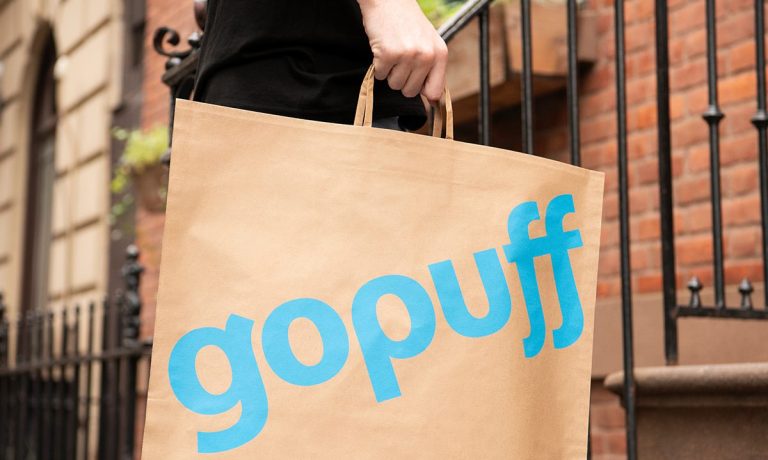
As on-demand delivery firms look for new revenue streams to boost profitability, Gopuff has unveiled a new B2B offering for direct-to-consumer (D2C) delivery.
The quick-commerce company announced Monday (April 15) via emailed press release the launch of Powered by Gopuff, a logistics and technology offering for brands to offer on-demand delivery to shoppers on their D2C apps and websites in as little as 15 minutes.
“We’ve been impressed by the consumer demand right out the gate. Consumers are increasingly shopping online and being served ads — now, for the first time, they have the opportunity to easily purchase CPG products, and then have them in-hand in minutes,” Daniel Folkman, Gopuff’s SVP of Business, told PYMNTS. “As a result, we’ve also seen a ton of demand from brands who are looking to leverage Powered by Gopuff to make their online media spend shopable, measurable, and more effective.”
The company is going from being just “the face of instant commerce” to “the fabric of instant commerce” by offering these capabilities “beyond the Gopuff app,” he added.
Alongside the launch, the company is debuting Storefronts Powered by Gopuff, a “customizable Shopify theme” that integrates with Gopuff, enabling consumer packaged goods brands to get their D2C sites powered by the delivery firm’s technology up and running within days. Orders through these sites are facilitated through and fulfilled by Gopuff’s dark stores. The company has tested the capability for the last six months with major brands including Unilever, Mondelēz International and Nestlé.
The move comes as on-demand delivery firms look for new ways to deploy their courier networks, driving more revenue from this high-cost workforce. For instance, DoorDash and Uber Eats have been adding more non-restaurant merchants to their platforms to drive sales outside of mealtimes.
Plus, Gopuff is not the only one investing in its white-label offerings. DoorDash has its DoorDash Drive business, Uber Eats has Uber Direct and Instacart has Retailer Storefronts.
Many consumers choose to shop from the comfort of their homes when given the option, according to PYMNTS Intelligence’s “2024 Global Digital Shopping Index: U.S. Edition,” created in collaboration with Visa Acceptance Solutions. The study, which drew from a survey of more than 2,400 U.S. consumers, found that more than 1 in 4 shoppers prefer to make purchases via digital channels with no interaction with physical stores.
Moreover, there is a demand for instant delivery. PYMNTS Intelligence’s study “The ConnectedEconomy™ Monthly Report: The Rise of the Smart Home” found that roughly 1 in 3 consumers bought non-grocery items from a same-day delivery aggregator such as Shipt each month, and that share was trending upward month to month. That share will likely only increase as more same-day delivery options become available.
Aggregators have also been aiming to better monetize their customer bases not only by creating new consumer sales opportunities but also by selling their user data to advertisers, investing in their retail media businesses to supplement delivery revenue. Instacart has been growing its ads business, and Uber shared on its last earnings call that more than half a million businesses are advertising across the company’s platform. Plus, DoorDash-owned Wolt announced Wednesday (April 10) the launch of Wolt Ads.
By expanding into these new areas — B2B white-label offerings, new retail categories and advertising — aggregators can boost their margins and offset the cost challenges of on-demand delivery.
For all PYMNTS retail coverage, subscribe to the daily Retail Newsletter.